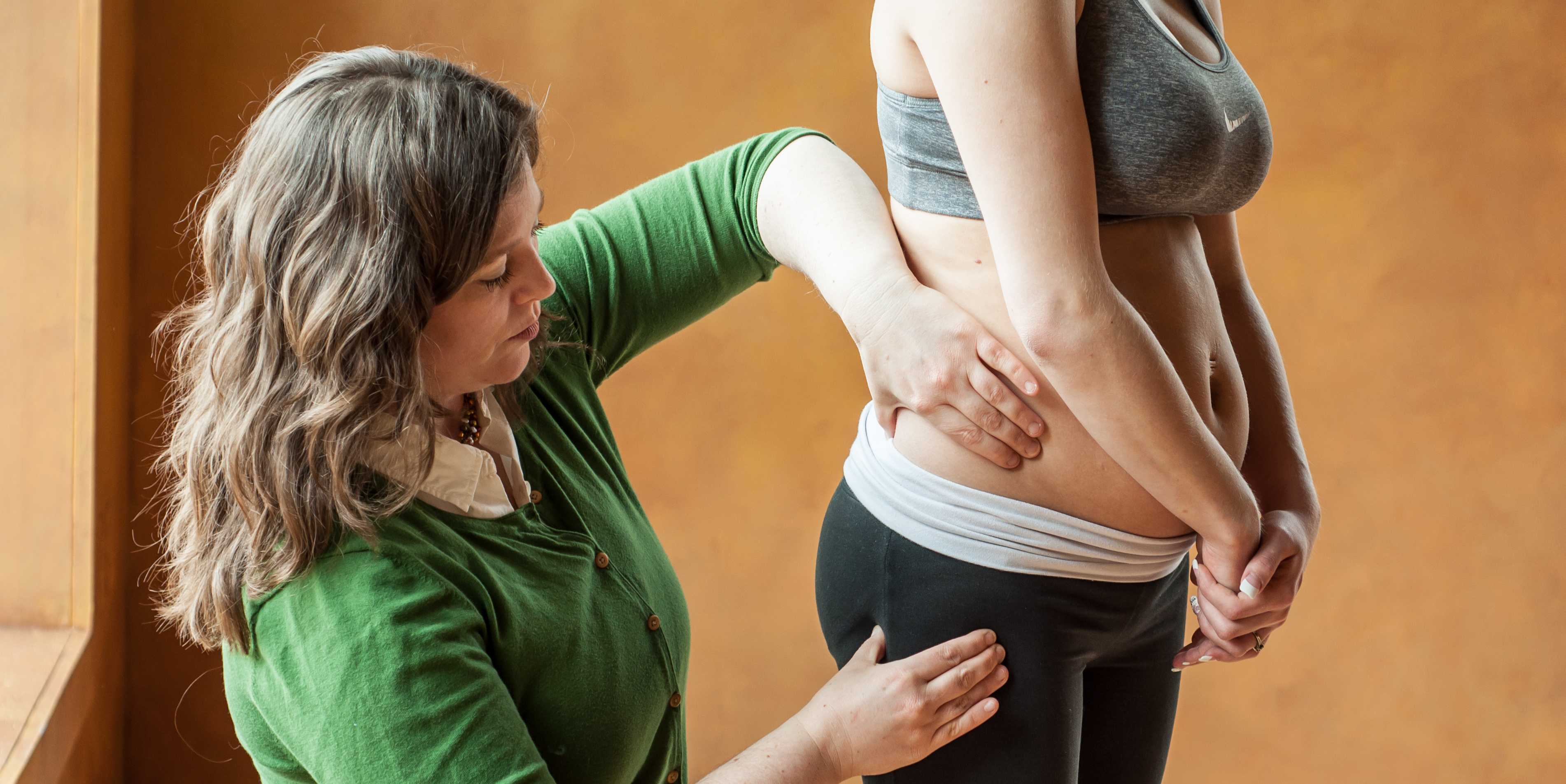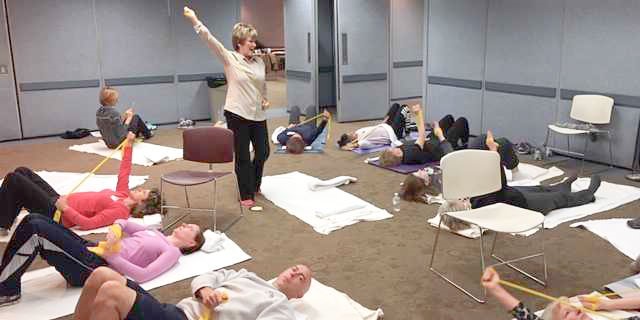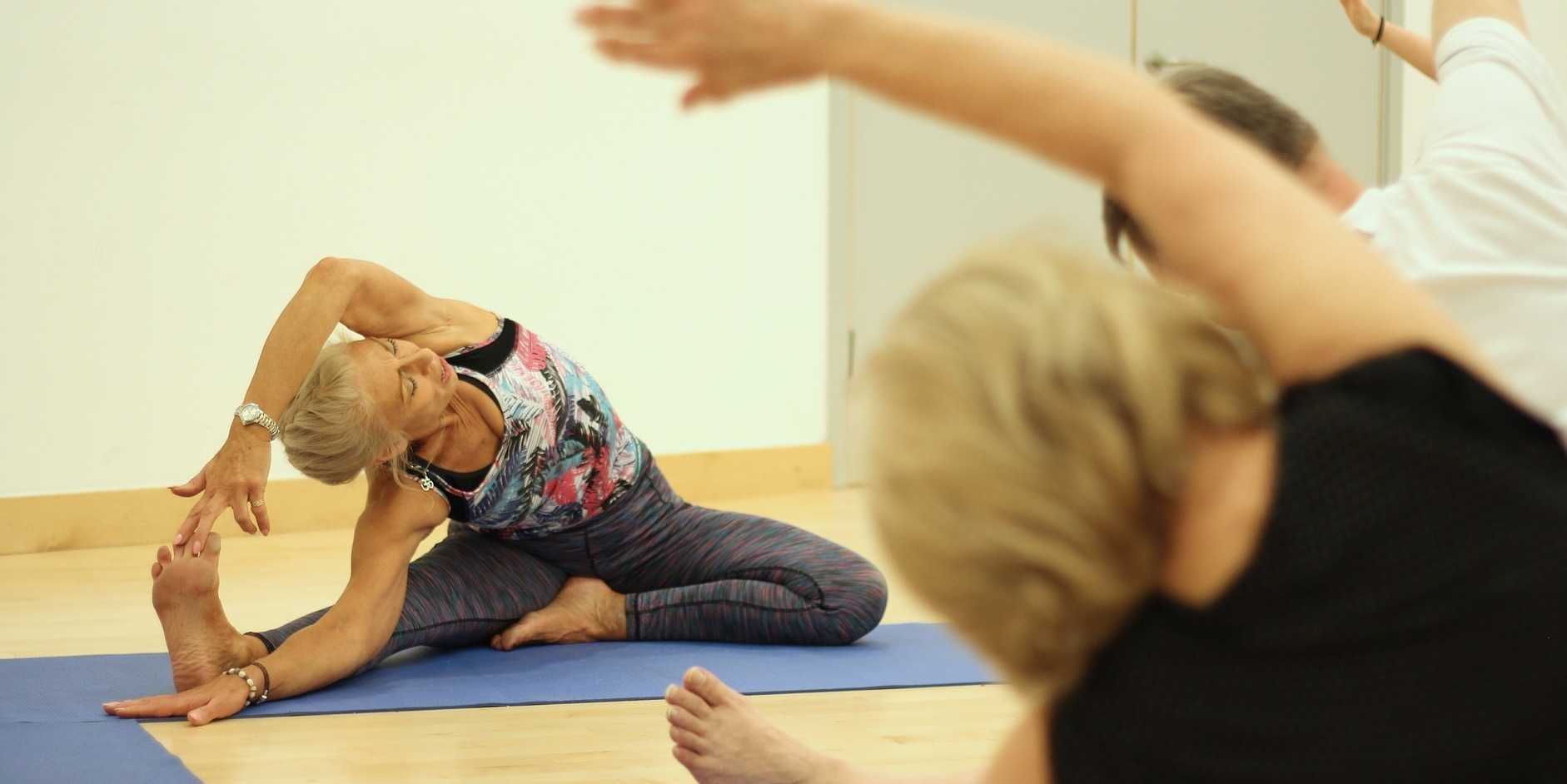
A report in The Canadian Journal of Human Sexuality describes the level of emphasis placed on particular sexual health topics in Canadian medical schools. Both the level of emphasis and the utilized teaching methods among 51 residency programs for obstetrics and gynecology (OBG), family medicine (FM), and undergraduate medicine (UGM) were evaluated. Program Directors and Associate Deans of the respective programs were electronically surveyed about the following topics: contraception, disease prevention, sexual violence/assault, childhood sexual abuse, sexual dysfunction, childhood and adolescent sexuality, role of sexuality in relationships, aging and sexuality, sexual orientation, gender identity, disability, and social and cultural differences.
The topic that received the most emphasis among the 3 program types was “information and skills for contraception.” Disease prevention for sexually-transmitted diseases was also a high-ranking topic.
The authors point out that while it seems understandable that OBG residencies may not include a significant amount of training in male sexual health, there was an absence of evidence on training in child sexual abuse and adolescent female sexuality in the OBG programs. The article notes other omissions of emphasis such as the lack of training among family practice residencies in transgender and gender identity issues, disability and sexuality, and cultural differences.
This article gives some insight into potential topics of training in human sexual health, and the lack of education in physicians regarding topics of sexual function and dysfunction. In addition to lacking knowledge of some topics in childhood, adolescent, and men’s and women’s health, we can be certain that most providers are not instructed in the role of pelvic rehabilitation providers for sexual dysfunction. How can we contribute to a provider’s knowledge of rehabilitation of sexual dysfunction?
Core lectures, including grand rounds and clinical training made up the primary modes of education for sexual health topics. What if each of us reached out to local training programs, or to local teaching hospitals, or even clinical groups and provided an educational platform about our role in sexual health?
In order to provide such training, you might feel as though you need additional resources and knowledge about sexual health and healing. If you would like to explore how we can maximize our contributions to men and women with sexual dysfunction, and explore your own thoughts and beliefs about sexual health, check out Herman and Wallace Pelvic Rehabilitation Institute co-founder Holly Herman’s course on Sexual Medicine for Men and Women taking place next in April in New Jersey.
In our weekly feature section, Pelvic Rehab Report is proud to present this interview with Herman & Wallace instructor Holly Tanner PT, DPT, MA, OCS, WCS, PRPC, LMP, BCB-PMB, CCI

How did you get started in pelvic rehab?
I joined Apple Physical Therapy as an orthopedic outpatient clinic manager back in 2000. The previous manager had begun treating women who had urinary incontinence and we had this (huge) old biofeedback unit. I told the company owners that I would be willing to take a course in treating urinary incontinence, which I quickly did. I also quickly learned that to do a great job in pelvic rehab, and to serve the patients well, you need to keep taking classes to learn about all the other issues that make pelvic rehab so potentially complex and engaging.
What have you found most rewarding in treating this patient population?
The fact that patients are so trusting and share their most intimate issues that may be difficult to discuss. Patients with pelvic dysfunction are so profoundly grateful for the help they receive, and that in turn inspires me to want to be helpful.
What do you find most rewarding about teaching?
I love providing a groundwork upon which the therapists can build through their own practices and through other coursework and knowledge they bring to the table. There is never one approach or one course that can provide an answer for each patient, and as an instructor for Herman & Wallace, I have the privilege of standing on the platform that Holly Herman and Kathe Wallace established when they founded the Institute. I feel that I get to fast-track the therapists by sharing what I have learned through experience and all the training that I have received, and then they can keep expanding the knowledge and skills within our field. I also learn a lot myself through the generosity of the therapists who bring their knowledge and experience to the courses.
If you could get a message to all therapists about pelvic rehab, what would it be?
Shadow a pelvic rehab therapist for half a day. That's all it will take to see the world that opens up in front of you, to feel inspired by the amount of issues that go "missing" and how to address them, and also how to notice how simple and meaningful it is to offer some guidance or hope to a patient who has pelvic dysfunction.
If you could make a significant change to the field of pelvic rehab or the field of PT, what would it be?
Now that more therapists are joining the ranks of pelvic rehab, I hope that we see more of them move into treating men and children. As Dawn Sandalcidi (who teaches about pediatrics for the Institute) shares with us, many of the pelvic dysfunctions start in childhood, and we must get to the kids as soon as possible.
What is your favorite topic about which you teach?
My favorite condition to treat and lecture about is definitely scrotal pain. There is such a paucity of awareness about the potential causes of scrotal or testicular pain, and men have been suffering way too long when they have this issue. In my experience, men can respond very quickly and completely with intervention.

This post was written by Steven Dischiavi, MPT, DPT, ATC, COMT, CSCS, who teaches the course Biomechanical Assessment of the Hip and Pelvis. You can catch Steve teaching this course in May at Duke University in Durham, NC.
One thing that jumps out at me when treating a professional athlete, is that they have “a guy or gal” for everything! Most high profile athletes have a physical therapist, athletic trainer, acupuncturist, nutritionist, massage therapist, personal trainers for speed, power, cross fit, and pretty much “a guy or gal” for anything that has something to do with athletic performance or injury prevention. In most recent years I have been hearing more and more that athletes use someone that can analyze their movement and develop corrective exercises for them. These professionals are not just physical therapists, but some are personal trainers, exercise physiologists, chiropractors, and so on…
This has clearly been leading to a paradigm shift in not only evaluation of the athlete, but more specifically how we treat our athletes and clients. The Functional Movement Assessment is a tool that is gaining more and more popularity. It identifies “movement dysfunction” and then sets out to manage these movement patterns. I am a firm believer in functional movement assessment, and I believe it does need a larger role in our profession…I believe this so strongly I have recently changed gears professionally and have accepted an assistant professor position on the Physical Therapy faculty at High Point University. I want to affect change from within!
That said this is a very slippery slope right now in our profession. There are many people that believe that functional assessment is necessary. These same people cannot agree on the best way to do this and the there is a paucity of evidence to support a specific method at this time. This has driven me to continue to push the envelope in how to assess human movement and what is the cornerstone of this philosophy. I think the cornerstone is the hip and pelvis. I know this is somewhat broad, but after working professional hockey for 10 years I saw first hand what the hip and pelvis brings to the table. This led me to integrate this cornerstone into all facets of my treatments with all types of clients, young, old, big, small, athletic human, non-athletic humans! It was a quantum leap when the evidence caught up to practice and we stopped taping the patella because we were able to wrap our heads around the fact that it’s the track moving under the train! This momentum continues, because I am in a state of the art biomechanics lab everyday watching and learning how we can extrapolate these concepts and continue to move forward and advance movement theory. This has also allowed me to see that there is still a need about how we treat movement dysfunction. Which has led me to continue to work on the concept of the Dynamic Integration of the Myofascial Sling Systems!
If you attend this course I think you will look at human movement a little differently. I think you’ll enjoy the creative ways we can activate particular muscle chains to integrate and coordinate complex movements with more efficiency.
Yes, Herman & Wallace traditionally focuses on the women’s health practitioner. This course gives women’s health practitioners more treatment options to go with their unbelievable manual therapy skill set. This course offers many therapeutic exercise options that can help control the neurologic changes they are creating with their clients. Past course participants from the women’s health arena have continuously commented that they have gained a new tool in their toolbox to address movement imbalances and a way to integrate more function into their exercise programs. The sports and ortho PT will really enjoy this course. It will challenge some of their current paradigms and stir up some lively conversation on functional movement assessment and how to treat movement dysfunction when identified. Sports/ortho PTs consistently report how refreshing it is to consider new things in the profession. These PTs will leave this course challenging some of the traditional approaches they have taken. The reports back to me are usually that the sports/ortho PTs have had fun at this course and look forward to trying what they have learned and performed in lab sessions and applying it with their clients. I look forward to having you in class and having some fun and trying a lot of new exercises and discussing how the assessment of human movement and how identifying movement dysfunction is the direction things are going. William Blake once said “what is now proven, was once only imagined!” I don’t think movement analysis is quite proven yet, but we’re definitely applying science to the art of practice!

Research in the field of sexual dysfunction has taught us several things about patients and healthcare visits. Most medical providers don’t ask about sexual function, most patients don’t bring it up, and women’s sexual health has a history of being undervalued and under-evaluated. Authors Maciel and Lagana describe the common myth that as women age, sexual interest decreases, and review literature to propose improved strategies. The study highlights the fact that there are positive physical health effects for older adults, and that by approaching sexual desire through a biopsychosocial method, further understanding of the issues can be gained.
Several factors have been found to be linked to healthy sex in older females. Having a positive attitude towards sex, an interesting an interested partner, good health, and a willingness to experiment sexually can all contribute to an active sex life. Women who are dealing with high stress, anxiety, and depression are known to be less sexually active. In this paper, the authors describe the work of Sobecki and colleagues, who found that older women have just as much interest in talking about sexual health as younger women, but that doctors aren’t usually asking about it. Sobecki et al. found that a patient reported feeling less embarrassed about bringing up sexual dysfunction if the medical provider demonstrated a professional demeanor, comfort with the topic, and a disposition that is kind and empathetic.
This last point seems worthy of pause and reflection in relation to the role of the pelvic rehabilitation provider. I would submit that most pelvic rehab therapists are highly capable of presenting a professional, kind, and empathetic demeanor. I wonder how many of us, however, had enough education regarding sexual health to demonstrate to patients a level of “comfort with the topic” that inspires a patient to bring up sexual concerns. The more comfortable we are with our own sexuality and the more knowledgeable we are about sexual health practices that are outside of our own experiences, the more we have to offer to our patients.
This excellent review article describes issues that older women often face: menopausal shifts in hormones and vaginal and perineal health, concerns about body image and self-worth. The authors also point out that the healthcare system has medicalized menopause, so that most women are offered little more than pharmaceuticals. One simple suggestion offered in the article is use of the Decreased Sexual Desire Screener that can help identify areas of concern in sexual health. If you are interested in learning more about sexual health and dysfunction, check out Institute founder Holly Herman’s Sexual Medicine for Men and Women continuing education course taking place next in April in New Jersey. If that date does not work for you, you could sign up early for the next course in San Diego in November!
This post was written by H&W instructor Elizabeth Hampton. Elizabeth will be presenting her Finding the Driver course in Milwaukee in April!
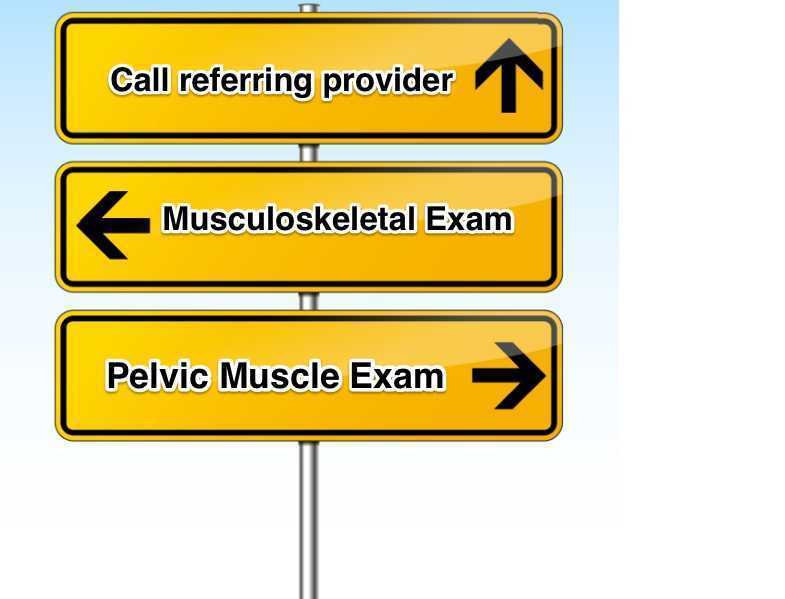
One of the most consistent questions that we hear at the Pelvic Floor 2B course is, “How do you choose between a pelvic floor and a musculoskeletal exam during your first visit with a pelvic pain client?” The answer depends on a number of factors, which include your clinical reasoning, toolbox, the client’s presentation, the clinical specialty, and expectations of the referring provider as well as the expectations of the client. It can be stressful to imagine gathering a detailed history, testing, client education and a home program within the first visit! Now that we have less time and total visits to evaluate and treat these complex issues, it can be overwhelming to know where to start.
Chronic pelvic pain has multifactorial etiology, which may include urogynecologic, colorectal, gastrointestinal, sexual, neuropsychiatric, neurological and musculoskeletal disorders. (Biasi et al 2014) Herman and Wallace faculty member, Elizabeth Hampton PT, WCS, BCB-PMD has developed an evidence based systematic screen for pelvic pain that she presents in her course “Finding the Driver in Pelvic Pain”. “There are a number of extraordinary models that exist for treatment of pelvic pain including Diane Lee’s Integrated System of Function, Postural Restoration Institute, Institute of Physical Art and more,” states Hampton. “However, regardless of the treatment style and expertise of the clinician, each clinician should be able to perform fundamental tissue specific screening. If a client has L45 discogenic LBP with segmental hypermobility into extension, femoral acetabular impingement, urinary frequency > 12/day as well as constipation contributed to by puborectalis functional and structural shortness, all clinicians should be able to arrive at the same fundamental findings during their screening exam. The driver of the PFM overactivity(3) needs to be explored further as local treatment alone (biofeedback and downtraining) will not resolve until the condition causing the hypertonus is found and treated.” Finding the Driver in Pelvic Pain is a course that models a comprehensive intrapelvic and extrapelvic screening exam with evidence based validated testing to rule out red flags, understand key factors in the client’s case as well as develop clinical reasoning for prioritizing treatment and plan of care. The screening exam complements any treatment model as it identifies tissue specific pain generators and structural condition, which will lead the clinician to follow their clinical reasoning and treatment model. Once the fundamentals are established, the clinician can move beyond screening and drill down into treatment of key factors which may include specific muscle gripping patterns, arthokinematic assessment and respiratory evaluation and retraining, among others.
Co-morbidities are common in pelvic pain are well documented (1, 2) and clinically these multiple factors are the reason pelvic pain is complex to evaluate and treat. Intrapelvic (urogynecologic, colorectal, sexual) as well as extrapelvic (orthopedic, neurologic, psychological and biomechanical clinical expertise) are required for skilled evaluation and treatment of this population. It is precisely this complexity, which makes working with pelvic pain clients challenging and extraordinarily rewarding. Physical therapists are uniquely skilled to put all of the puzzle pieces together in these complex clients. Finding the Driver is being offered twice in 2015: April 23-25, 2015 at Marquette University and again in the fall. Check Herman Wallace.com for further details.
1. Chronic pelvic pain: comorbidity between chronic musculoskeletal pain and vulvodynia. Reumatismo: 2014 6;66(1):87-91. Epub 2014 Jun 6. G Biasi, V Di Sabatino, A Ghizzani, M Galeazzi
2. http://www.jhasim.net/files/articlefiles/pdf/XASIM_Master_5_6_p306_315.pdf
3. IUGA/ICS Terminology for Female Pelvic Floor Dysfunction. http://c.ymcdn.com/sites/www.iuga.org/resource/resmgr/iuga_documents/iugaics_termdysfunction.pdf
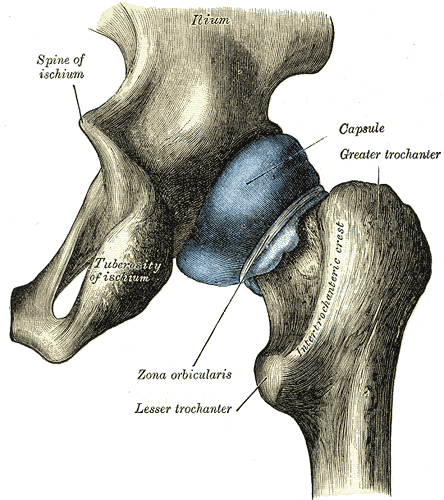
An article appearing this year in Arthroscopy details a systematic review completed to determine if asymptomatic individuals show evidence on imaging of femoroacetabular impingement, or FAI. Cam, pincer, and combined lesions were included in the results. To read some basics about femoroacetabular injury, click here. Over 2100 hips (57% men, 43% women) with a mean age of 25 were studied. (Only seven of the 26 studies reported on labral tears.) The researchers found the following prevalence in this asymptomatic population:
Cam lesion: 37% (55% in athletes versus 23% in general population)
Pincer lesion: 67%
Labral tears: 68%
Mean lateral and anterior center edge angles: 30-31 degrees
The authors conclude that femoroacetabular impingement tissue changes and hip labral injury are common findings in asymptomatic patients, therefore, clinicians must determine the relevance of the findings in relation to patient history and physical examination. Because hip pain is a common comorbidity of pelvic pain, knowing how to screen the hip joint for FAI or labral tears, rehabilitate hips with joint dysfunction, and help someone return to activity following a hip repair is valuable to the pelvic rehabilitation therapist.
As the athletic population may have increased risk of hip injuries due to overuse, traumatic injury, or vigorous activity, being able to address dysfunction in both high level and less active patients is necessary. Herman & Wallace faculty member Steve Dischiavi has developed a course rich in athletic examples and including education about activating fascial systems in various planes. If you are ready to step up your game related to Biomechanical Assessment of the Hip & Pelvis, check out this continuing education course taking place next in Durham, North Carolina in May.
In our weekly feature section, Pelvic Rehab Report is proud to present this interview with newly certified practitioner Reeba Varghese, DPT. PRPC.

How did you get involved in the pelvic rehabilitation field?
I was asked to attend a course by my director back in 2008 because they wanted to expand pelvic rehabilitation services to a few of our company's locations. I told my director I did not think this specialty was for me but I would be willing to attend one course and see how I felt. When I attended PF1 I was immediately drawn in by the wealth of knowledge I gained. Learning the intricacies of the human anatomy, specifically the female anatomy just completely opened my eyes to one of Gods most amazing creations. Also, the passion in the instructors was contagious. When I returned to work and started to see patients with incontinence and listened to their stories my passion for supporting these individuals in their rehabilitation journey began to grow. As I continued to expand my knowledge base by attending more courses through Herman and Wallace I realized I had found my niche in the world of physical therapy.
What patient population do you find most rewarding in treating and why?
I feel honored every time a patient walks into my clinic and begins to open up and share about their pelvic health issues. There is so much stigma associated with discussing these issues so when someone is willing to receive help I want to support them however I can. Also, it seems like more and more women I see have been through some kind of traumatic experience in their life and they find their way to you in an emotionally unstable state. What a great opportunity to be a part of their healing journey.
What motivated you to earn PRPC?
After practicing as a physical therapist for 10 years I was re-evaluating my life as a whole and was praying about what direction to go next in my life/career. I felt like the next step for me was to pursue a specialty area that I wanted to invest more time and energy into, as well as seek opportunities for professional growth. Shortly after I made this decision I received an email from Herman and Wallace regarding the fall 2014 PRPC exam. The lightbulb went off and I decided to apply to sit for the exam.
What is in store for you in the future?
One of my biggest dreams is to be a mother one day. I will be getting married this fall and hopefully starting a family. I plan to work part-time once kids come along. I am considering maybe working in a clinic which solely provides pelvic rehabilitation services. I also have a passion for taking my skills and knowledge and serving women in areas that do not have healthcare. I have done medical mission trips to Oaxaca, Mexico and served in an orphanage in Brasov, Romania. I absolutely plan to continue doing medical missions. I think it would be an honor to serve the women and children in the red light districts of India.
Learn more about Reeba Varghese, DPT. PRPC at her Certified Pelvic Rehabilitation Practitioner bio page. You can also learn more about the Pelvic Rehabilitation Practitioner Certification at www.hermanwallace.com/certification.

The merriam-webster online dictionary defines reflex as "an action or movement of the body that happens automatically as a reaction to something" or as "something that you do without thinking as a reaction to something." This reflexive action ideally describes what the pelvic floor does when we perform an activity that increases intra-abdominal pressure- and that can help us tighten the pelvic floor protectively so that urine is not expelled from the bladder and out the urethra. A research article by Dietz, Bond, & Shek asked if childbirth interrupted the body's natural reflex of contracting the pelvic floor muscles during a cough.
84 women completed the study, which utilized ultrasound measurements to assess reflex contraction of the pelvic floor during a cough. The women were pregnant with their first child (a singleton) and were between 33-37 weeks gestation. Prior to childbirth, 98% of the subjects demonstrated a reflex contraction of the pelvic floor muscles. At a postpartum visit at least 3 months postpartum, the number of women completing a reflex contraction was reduced to 75%. In addition to fewer women demonstrating a shortening contraction during a cough in the postpartum women, the intensity of the contraction was also reduced.
To collect the data, the researchers prospectively completed 4D (4-dimensional) ultrasound (US) volume measurement of the pelvic floor during a cough. They used levator hiatus diameter changes to quantify reflex action of the pelvic floor muscles. From prenatal to postnatal visit, the magnitude of the reflex contraction decreased from 4.8 mm to 2.0 mm (the number represents the mean difference in midsaggital diameter between rest and maximal contraction.) In the antenatal visit, 26 of the 84 women complained of stress urinary incontinence, at the postpartum visit, 20 reported stress incontinence. An association was noted between a lower magnitude of reflex contraction and stress urinary incontinence.
The authors conclude that pelvic floor reflexes are altered by childbirth. The study offers theories as to why the reflexive contraction is interrupted, such as nerve injury or muscle damage, but did not make concrete conclusions about the causes of reflex interruption. Regardless of the mechanism that interrupts a reflexive contraction, this study highlights the value and importance of teaching women to retrain this importance reflexive contraction, and not only for a cough, but for any activity that may create a significant change in intra-abdominal pressure. If you are interested in learning more about postpartum rehabilitation, check out the Care of the Postpartum Patient, which will be offered next in Boston in May!
In our weekly feature section, Pelvic Rehab Report is proud to present this interview with Herman & Wallace instructor Tina Allen, PT, BCB-PMD, PRPC

How did you get started in pelvic rehab?
I was about 5 years into my career as a PT when for some reason I had patients who where comfortable with me enough to ask questions like, "I'm leaking. Is that normal after giving birth?", "Since my total hip replacement I've been leaking urine" and "I have pain sometimes when I'm have sex...is that normal?". I was working in Outpatient Orthopaedics and I had no idea if it was normal. I searched and found out that it wasn't. After whispering to my patients that it wasn't normal, that I read that there where things they could do about it and then slipping them pieces of paper with instructions on how to maybe make it better; I decided I should learn if there was something a PT could do to help. I spent time with Ob/Gyn's and Urologists learning from them and applying my musculoskelatal knowledge to what they taught me. I was still in denial that I could help folks but then I started getting patients specifically referred to me for these conditions. I finally found that there where classes I could take! Imagine! That was 20 years ago now!
Who or what inspired you?
My patients have always been who inspires me! The questions they ask and how they face what they are going through has always pushed me to figure out ways to help them along their paths to healing and improved function!
I must also include all the PT's whom take our courses. Watching everyone lean into the uncomfortableness of what we teach and the questions everyone asks all in the hopes of helping that client whom walks into the clinic on Monday is inspiring.
What have you found most rewarding in treating this patient population?
It has to be that first session with a patient whom when you educate them on anatomy and function of the urogynecolgical system including fascia and what is needed for function (intimacy, continence etc) and I can see the light bulb go off for them on how everything is connected and everything has to be treated as a whole.
What do you find more rewarding about teaching?
This has to be the inspiration I get a thrill from being with a room of Pelvic Rehab therapists. We all work behind closed doors all day and getting to be in a room with such amazing like-minded therapists gives me a shot in the arm. To watch us all click in and problem solve how to serve our population of clients is inspiring for me.
How did you get started teaching pelvic rehab?
I was lab assisting courses for Kathe and Holly for years. Then one year Holly Herman just kept saying to me, "Why aren't you teaching?" "You could teach this?" "Tina, why don't you take this lecture?" "Tina, how many patients do you see like this in a day? What would you do?" I almost starting avoiding her Then I talked to Kathe about teaching and she said she was just waiting for me to say I was ready to start. That's our founders; always encouraging us to do more and contribute more!
What was it like the first time you taught a course to a group of therapists?
The first time I taught was terrifying! I'm a bonafide introvert (have multiple personalty tests to prove it) and standing in front of 40+ folks talking was not my idea of a fun way to spend a weekend. After the first lecture or two I found a rhythm and relaxed into it. By the afternoon or maybe the next day I was very excited to be around so many clinicians interested in learning and treating Pelvic Rehab.
What have you learned over the years that has been most valuable to you?
That my clients journey is their journey and I get to be a part of it. It's a privilege but it is still their journey. My hope is that where ever they meet me along their path I can assist them to their next step. As long as I get out the way that can happen.
What is your favorite topic about which you teach?
My favorite part of every course are the lab sessions. Getting to teach at each table in small groups and helping clinicians refine their observation and palpation skills is what makes me happy!

A US study published in the International Society for Sexual Medicine last year reports on the available evidence linking cycling to female sexual dysfunction. In the article, some of the study results are summarized in the left column of the chart below. On the right side of the column, we can consider ideas about how to potentially address these issues.
| Examples of Research Cited |
Ideas for Addressing Potential for Harm |
| dropped handlebar position increases pressure on the perineum and can decrease genital sensation | encourage cyclists to take breaks from dropped position, either by standing up or by moving out of drops temporarily |
| chronic trauma can cause clitoral injury | encourage cyclists to wear appropriately padded clothing, to apply cooling to decrease inflammation, and to use quality shocks or move out of the saddle when going over rough roads/terrain when able |
| saddle loading differs between men and women | women should consider specific fit for bike saddles |
| women have greater anterior pelvic tilt motion | is pelvic motion on bike demonstrating adequate stability of pelvis or is there a lot of extra motion and rocking occurring? |
| lymphatics can be harmed from frequent infections and from groin compression | patients should be instructed in positions of relief from compression and in self-lymphatic drainage |
| pressure in the perineal area is affected by saddle design, shape | female cyclists with concerns about perineal health should work with a therapist or bike expert who is knowledgeable about a variety of products and fit issues |
| unilateral vulvar enlargement can occur from biomechanics factors | therapists should evaluate vulvar area for size, swelling, and evidence of imbalances in the tissues from side to side, and evaluate bike fit and mechanics, encouraging women to create more symmetry of limb use |
| genital sensation is frequently affected in cyclists, indicating dysfunction in pudendal nerve | therapists should evaluate female cyclists for sensory or motor loss, establishing a baseline for re-evaluation |
Because women tend to be more comfortable in an upright position, the authors recommend that a recreational (more upright) versus a competitive (more aerodynamic and forward leaning) position may be helpful for women when appropriate. Although saddles with nose cut-outs and other adaptations such as gel padding in seats are discussed in the article, the authors caution against making any distinct recommendations due to the paucity of literature that is available. The paper concludes that more research is needed, and particularly for considering the varied populations of riders ranging from recreational to racing.
Within a pelvic rehabilitation setting, applying all orthopedic and specific pelvic rehabilitation skills is necessary for women cyclists who present with pelvic dysfunction. Because injury to the perineal area including the pudendal nerve can have negative impact on function such as bowel, bladder, or sexual health, skills in helping a patient heal from compressive or traumatic cycling injuries is very valuable. To learn more about pudendal nerve health and dysfunction, the Institute offers a 2-day course titled Pudendal Neuralgia Assessment, Treatment and Differentials: A Brain/Pain Approach. This course is offered next in Salt Lake City in April, so sign up soon!
By accepting you will be accessing a service provided by a third-party external to https://hermanwallace.com./




















